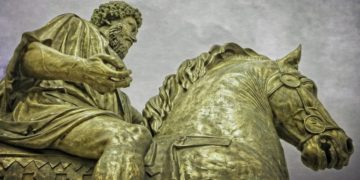Human behavior refers to a person’s ideas, feelings, and behaviors. The following are some examples to get you started.
Strategy
Setting goals and devising ways to attain them in a constrained and competitive environment. Humans can use systematic analysis to create strategies based on known facts and plausible forecasts.
Communication
A language is a tool that humans have evolved to include a wide range of fully developed concepts that can be used and communicated. They also use drawings, symbols, body language, and eye contact to communicate visually. Sign languages (represented with the hands and face), spoken languages, and written languages are all examples of languages.
Thinking
Humans have the ability to think in a variety of ways. Language notions enable more advanced abstract thinking and visual data. Human thought can produce rational, irrational, or coldly rational outcomes.
Knowledge
Curiosity drives the development and acquisition of knowledge in people. Humans invest a significant portion of their lives in education, with some students spending more than 20 years in school.
Experimentation
Trying different things to see what happens. A method of gaining knowledge and experience.
Emotion
Emotions are a wide spectrum of mental states that color human thoughts.
Empathy
Humans have a high capacity for empathizing with others. They may, in fact, share their emotions with others through a process known as empathy.
Motivation
Humans are driven by strong emotions like angst, greed, competitiveness, and fear, which drive them to act and not act. They are generally inspired to participate in the human experience. Basic human requirements such as oxygen, water, and food are the most powerful motivators. When these needs are met, motivation may shift to higher-level goals, such as self-fulfillment.
Social Interactions
Human beings are social creatures who form societies, communities, organizations, groups, and families. They form various relationships, including leaders, followers, mentors, friends, foes, neighbors, romantic partners, and families.
Social Position
Humans want to be respected by other humans. This is sometimes expressed in terms of social status, which is determined by factors such as wealth, youth, attractiveness, coolness, style, intelligence, authority, popularity, position, recognition, and affiliation with high-status individuals and institutions. Brands, products, and services that signal social status have also been commercialized and commoditized. Human conduct in terms of social standing is incredibly complicated. For example, a CEO who dresses informally to try to diminish their authority and position may countersignal to display strength.
Cooperation
Politics, leadership, organizations, agreements, and communication are examples of how humans may work together in huge groupings. Millions of people working together on a strategy or as a civilization are not uncommon. This permits them to develop massive works such as cities and infrastructure.
Conflict
People aren’t always cooperative. Civility and diplomacy can deteriorate, leading to war. Humans can cause widespread harm and misery.
Competition
For resources, all species compete. Humans, being the dominant species on the planet, mostly compete. With feelings like rivalry and envy, humans are predisposed to competition. Positive attitudes of comradeship, for example, are conducive to competition.
Play
The ability to pursue happiness just for the sake of happiness in play. This appears to be important for human growth, creativity, and social skills.
Humor
Humor is essentially the mental version of the play, in which people find enjoyable ways to think.
Taking Chances
Humans are risk-takers who show initiative, fortitude, and perseverance. They’re also capable of calculating and managing risk.
Work
Humans show the perseverance and concentration required to achieve difficult activities. They can continuously enhance their work and eliminate toil. Individuals differ widely in their work, work habits, and talents.
Technology
Humans modify their environment, invent tools and automate things. Without technology, they are pretty vulnerable, becoming fully reliant and captivated by it.
Tradition
Despite their ability to adapt constantly, humans love stability and keep traditions for hundreds, if not thousands, of years. This can create a sense of continuity and connection to the past and be shared between generations.
Culture
Culture is a set of common values, customs, and behaviors that evolve due to shared experiences. This has no central design and can occur in any group that spends time together.
Norms
A cultural norm is a set of shared expectations. This permits people to coordinate their actions to get along.
Mediocrity
Some people strive to reduce effort, increase comfort, and reduce risk. This is accomplished by forming large groups and pursuing harmony by avoiding conflict and competition. This is a common occurrence that is characterized by mediocrity, complacency, or uniformity.
Imagination
The ability to imagine in ways that are not realistic is known as imagination. This frequently results in the future being defined, so imagination and reality become entwined.
Escapism
Humans spend time doing things that aren’t directly related to their life goals, known as escapism. Daydreaming, play, entertainment, leisure, and recreation are examples of this.
Creativity
Humans can come up with non-obvious answers to challenges because of their imagination. They also value items that are derived from the imagination, such as art, music, film, performance art, fashion, and food.
Resilience
Humans can persevere in the face of adversity and maintain their enthusiasm. Humans strengthen their resilience to stress due to exposure, making stress beneficial. As a result, individuals may seek out somewhat stressful encounters on purpose.
Altruism
Altruism refers to a person’s willingness to make sacrifices to serve others. This principle can also be used in initiatives to aid animals and the environment.
Introspection
The ability to objectively evaluate one’s own emotions, thoughts and conduct to better is known as introspection.
Add a conclusion here
If you are interested in learning more about culture and society, here’s an article on how social norms influence behavior.

Senior Editor
Brielle used to write for a pop culture magazine, where she handled a small “good news” section by the back of the print media. Brian and Cynthia took notice and offered her the editor post upon forming Living By Example . Years later and she now leads our pool of writers across the globe








